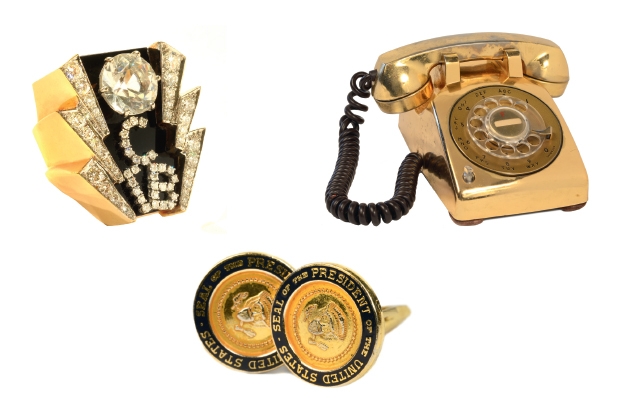In 1675 Lady Bedingfield wrote to Robert Paston, first Earl of Yarmouth. Never, she exclaimed, had she seen anything so fine as the latter’s mansion, Oxnead Hall. It was ‘a terrestriall paradise’, the ‘gardens so sweet — so full of flowers’, the house so clean. ‘Nor,’ she concluded, ‘did I ever in my life find anything in poetry or painting half so fine.’ Almost all this splendour vanished long ago. But its essence survives, compressed into a single painting, ‘The Paston Treasure’, currently the centrepiece of an exhibition at Norwich Castle Museum.
It is a cornucopia of baroque bric-à-brac, crammed with a jumbled abundance in which curvilinear tropical shells, ornate cups, jewellery and a globe are interspersed with musical instruments, flowers, fruit, a lobster, living bird and monkey. Behind and above are an extinguished candle and various timepieces that suggest this was a memento mori — a reminder of passing time and approaching death. But, as the exhibition makes clear, this is also a careful catalogue of real possessions — the treasure of the title.
Indeed, the artist has done this so meticulously that the result looks like a 19th-century photographic collage in which each item is depicted with precision, but has just been stuck down next to its neighbour so they don’t seem to belong in the same space. The young girl who pops up in the middle of this confusion of collectables is beautifully individualised — apparently a true portrait — but looks as flat as a shop-sign.
In the accompanying book it is suggested that the artist, who was probably Flemish, worked in a temporary studio at Oxnead, while the patron brought out one valued oddment after another for him to depict. Personally, I also suspect the use of the fashionable 17th-century gadget, a camera obscura (the probable date, 1663, is exactly contemporary with Vermeer).
Around this opulent composition, the curators have arrayed several of the strange and luxurious items we see in the painting: cups fashioned from nautilus shells (see p25), a flask of mother-of-pearl from Gujarat — plus many other objects, and equivalents, to things the Pastons had or might have had.
The Pastons had put together the kind of collection that was all the rage among aristocrats of Italy and Central Europe: a Wunderkammer or cabinet of curiosities. The most celebrated array of such treasures — both works of art and outré natural phenomena — was hoarded by the Habsburg Emperor Rudolf II at Prague Castle. It was an era in which they, like Rudolf, could combine the love of art with scientific enthusiasms, and a touch of magic.
Sir William Paston (1610–62/3) studied science, geography and medicine, and travelled remarkably widely: as far as Jerusalem, Istanbul and Egypt. In the background of his portrait an unfortunate Egyptian is being eaten by a crocodile. Back at Oxnead, he had two stuffed specimens of those reptiles hung from the ceiling. The young African to the left of the picture — though sumptuously dressed and tenderly painted — may well have been another exotic acquisition.
These souvenirs of William’s travels have disappeared, but a splendid tabletop that he managed to acquire while on his extended Grand Tour has survived. This, decorated with a naturalistic still life executed in hard stones (pietre dure), a Florentine speciality, is exactly the sort of thing that pleased the Medici Dukes and — indeed — the Habsburgs.
William was the main collector of the Paston family, probably the richest in Norfolk. His 15th-century forebears wrote the famous letters. He may have begun the painting of his treasures. Possibly, it was completed by his son Robert (1631–83) as a memorial after William’s death, thus changing its meaning (Robert seems to have had his hated stepmother painted out and replaced by a clock).
Robert Paston was a spendthrift and a melancholic who destroyed the family fortunes and attempted to cure his gout, scurvy and depressions with bezoar stones. These, ‘a concretion of gallstones mixed with animal hair, found in the intestines of ruminant animals’, as an exhibition label explains, were much prized by the Emperor Rudolf. The one on display looks a bit like a scoop of ice-cream, marbled with chocolate.
A keen amateur alchemist, Robert Paston collaborated with Sir Thomas Browne, among others, on a search for a ‘red elixir’ which would transform base metal into gold. The mention of Browne — a marvellous and quirkily erudite writer — is an indication that though Oxnead might seem remote and rustic, there was nothing provincial about the Pastons or their circle.
‘The Paston Treasure’ is an exercise in scholarly detective work, with much of the attraction of a historical whodunit. There are still plenty of unanswered questions — among them who the painter of the picture was. But the exhibition reveals enough to make you feel you are stepping back into the forgotten world that so delighted Lady Bedingfield.






Comments